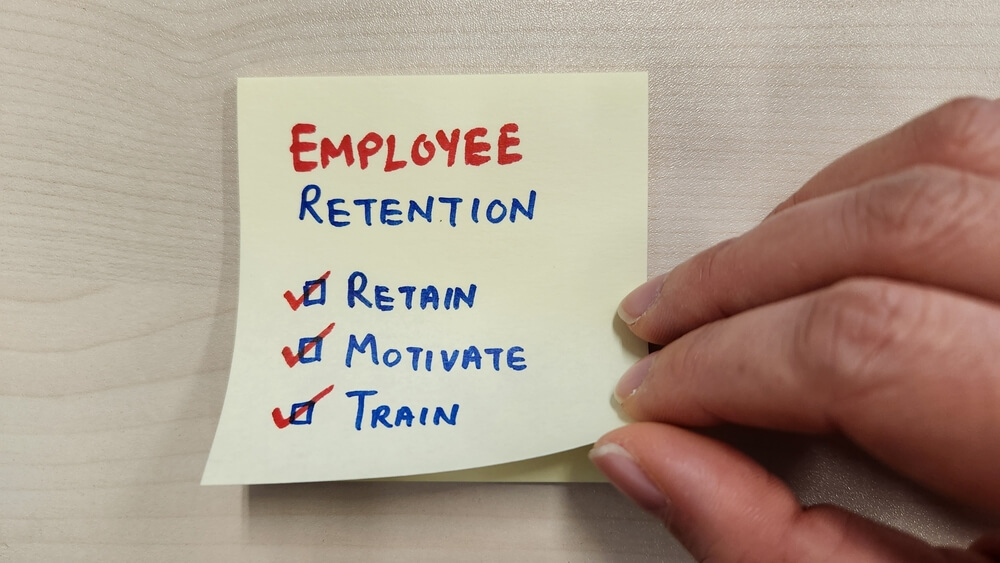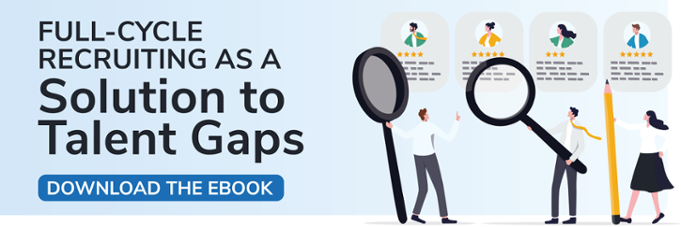
Retaining top talent is essential for maintaining a competitive edge and achieving long-term success. In today’s fast-paced business environment, where employee turnover rates are high and the competition for top talent is fierce, implementing effective retention strategies is more important than ever.
A vital component of any successful retention strategy is employee engagement. Engaged employees are more likely to be satisfied with their jobs, perform at a higher level, and remain committed to their organization. In fact, companies with higher levels of employee engagement have lower turnover rates — as much as 43% lower for companies with less than 40% annualized turnover.
In this blog post, we will discuss the reasons for employee turnover and outline various strategies organizations can implement to improve retention rates.
Understanding the Reasons for Employee Turnover
Employee retention strategies are bound to fail if employers do not understand why they are losing employees in the first place.
Lack of Career Growth Opportunities
One of the main reasons employees leave their jobs is the lack of career growth opportunities. When employees feel stagnant in their roles and see no prospects for advancement, their job satisfaction and engagement levels decline.
Poor Management
Ineffective management can be a significant driver of employee turnover. Employees often leave their jobs due to poor communication or a perceived lack of support.
Lack of Recognition and Appreciation
Employees want to feel valued and appreciated for their hard work and dedication. They may become disengaged and seek new opportunities elsewhere when their efforts go unnoticed. Implementing employee recognition programs and celebrating their accomplishments can help boost morale and reinforce a sense of loyalty to the organization.
Poor Work-Life Balance
Maintaining a healthy work-life balance is crucial for employee wellbeing and job satisfaction. Employees who feel overworked and unable to balance their professional and personal lives may be more likely to seek employment elsewhere.
With this in mind, let’s explore effective employee retention strategies that address these common drivers of turnover.

Communicating with Employees
1. Regular Feedback and Performance Reviews
Maintaining open lines of communication is essential for employee retention. Regular feedback and performance reviews allow employees to understand their strengths, areas for improvement, and the expectations of their role. This ongoing dialogue can increase job satisfaction and employee engagement, ultimately contributing to better employee retention and reduced turnover costs.
2. Open-Door Policy
Implementing an open-door policy encourages employees to approach their supervisors or managers with any questions, concerns, or ideas. This policy promotes a transparent work environment where employees feel valued and heard.
Open communication can improve trust between employees and management, fostering a more supportive and positive workplace that encourages employee loyalty and a sense of psychological safety.
3. Transparency and Honesty
Transparency and honesty in communication are vital in building trust and maintaining strong employee relationships. By keeping employees informed about company decisions, goals, and changes, organizations can create a sense of inclusivity and trust that supports employee retention and fosters a healthy organizational culture.
Offering Flexible Work Schedules
4. Remote Work Options
As the demand for remote work continues to grow, offering remote work options can be a highly effective employee retention strategy. Remote work can improve work-life balance, reduce stress, and enhance job satisfaction, leading to higher employee retention rates and a more committed workforce.
5. Flexible Hours
Providing employees with flexible hours can help them balance their professional and personal lives more effectively, reducing burnout and increasing job satisfaction. Flexible work schedules can lead to higher employee engagement, improved productivity, and a more attractive work environment that supports employee retention and promotes employee wellbeing.
6. Job Sharing
Job sharing is another flexible work arrangement that can help promote work-life balance and employee retention. By allowing two employees to share the responsibilities and hours of a single full-time position, job sharing can provide employees the flexibility they need to manage their personal commitments while maintaining a career.
Offering Competitive Salaries and Benefits Packages
7. Market-Competitive Salaries
Offering market-competitive salaries is crucial for attracting and retaining top talent. Competitive compensation packages signal to employees that their skills and contributions are valued, leading to increased employee satisfaction and a stronger employer brand.
8. Health Insurance and Retirement Plans
Comprehensive health insurance and retirement plan options can be a decisive factor in employee retention. Employees are more likely to remain with organizations that offer attractive benefits packages that demonstrate a commitment to their long-term wellbeing and financial security.
9. Paid Time Off and Vacation Days
Offering paid time off and vacation days is another essential aspect of a competitive benefits package. Ensuring employees have ample time to rest, recharge, and attend to personal matters can help prevent burnout and promote a healthier work-life balance, ultimately contributing to better employee retention and a more engaged workforce.
Promoting from Within
10. Career Growth Opportunities
Offering career growth opportunities within the organization can be a powerful employee retention strategy. When employees see a clear path for advancement and can envision a future with the company, they are more likely to remain loyal and committed. Creating opportunities for internal promotions, lateral moves, and skill development can help foster a sense of purpose and progression.
11. Leadership Development Programs
Investing in leadership development programs is another way to retain top talent. By providing employees with the skills and knowledge necessary for leadership roles, organizations can create a pipeline of qualified candidates ready to step into management positions. This approach helps with retention and contributes to organizational stability and continuity.
12. Succession Planning
Effective succession planning is essential for employee retention, particularly with critical organizational roles. By identifying potential successors and preparing them for future leadership positions, companies can reduce the risk of talent gaps and ensure a smooth transition when key employees retire or move on to other opportunities[[N]](List A term).

Investing in Employee Development
13. Training and Development Programs
Providing employees with training and development opportunities can significantly impact employee retention. Employees who feel supported in their professional growth and skill development are likelier to remain with the company and be engaged in their work. Implementing targeted training programs can help employees stay current on industry trends, acquire new skills, and advance their careers.
14. Tuition Reimbursement and Continuing Education
Offering tuition reimbursement and continuing education programs is another way to invest in employee development and improve retention. By supporting employees' pursuit of higher education or certifications, organizations demonstrate their commitment to employee growth and professional development, which can result in increased job satisfaction and loyalty.
15. Mentoring and Coaching Programs
Implementing mentoring and coaching programs can provide employees with valuable guidance, support, and resources for professional growth. These programs can enhance employee engagement, build relationships, and foster a culture of learning and development within the organization, ultimately supporting employee retention and promoting talent development.
Creating a Positive Work Environment
16. Employee Recognition and Appreciation Programs
Recognizing and appreciating employees' hard work and accomplishments is crucial for creating a positive work environment supporting employee retention. Implementing recognition programs, celebrating achievements, and offering meaningful rewards can boost employee morale and reinforce a sense of loyalty to the organization.
17. Team-Building Activities and Events
Organizing team-building activities and events can strengthen employee relationships, improve collaboration, and create a sense of belonging. These activities can enhance employee engagement and contribute to a positive company culture that supports employee retention and promotes a sense of camaraderie.
18. Positive Company Culture
A positive company culture is essential for attracting and retaining top talent. A supportive, inclusive, and collaborative work environment can encourage employee commitment and satisfaction, resulting in higher retention rates and a more productive workforce.
Using Retention Strategies in 2023
Embracing the principles of employee engagement, work-life integration, and talent development will help retain top performers and contribute to a thriving organizational culture that attracts new talent. As we move forward in 2023, employers must prioritize employee wellbeing and recognize the value of a diverse and motivated workforce.
Finally, remember that employee retention is an ongoing process that requires continuous effort, adaptation, and improvement. Organizations can stay ahead of the curve and ensure long-term success and growth by staying informed about the latest trends, best practices, and innovative approaches to employee retention. It's time to invest in your employees and reap the benefits of a dedicated and committed workforce.




